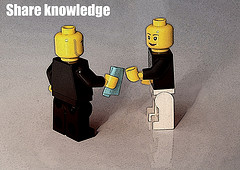Millennia Group is all about documents; document scanning, document workflow, document management systems, etc. That means we are always interested in what is next and the future of the document management industry.
systems, etc. That means we are always interested in what is next and the future of the document management industry.
So it was interesting to see AIIM.org having a conversation about Hadoop (a framework to support distributed data storage and analysis) and also hearing from one of our developers about Ethereum (a distributed computing model for digital currency and digital “smart contracts”). Both of these models definitely look to the future.
It was intentional that the word “distributed” is used to describe both models. In fact, the distribution of data is part of the Cloud movement and it has some clear advantages like lower cost and higher security. Most companies want lower cost and more secure applications. Beyond the concept of distributed data, it is more difficult…



 IRS Publication 4837, otherwise known as “Achieving Quality Examinations through Effective Planning, Execution and Resolution” published by the IRS Large Business and International Division, indicates that it would be wise to have supporting documents readily available when audited. Because you want to defend your position and you really don’t want the cost of responding to the audit to be greater than the potential tax impact.
IRS Publication 4837, otherwise known as “Achieving Quality Examinations through Effective Planning, Execution and Resolution” published by the IRS Large Business and International Division, indicates that it would be wise to have supporting documents readily available when audited. Because you want to defend your position and you really don’t want the cost of responding to the audit to be greater than the potential tax impact. In a past era processes were set in stone. Assembly lines were created and they ran for three shifts a day year after year. Big mainframes were programmed and some of those programs still run today. Change was slow and methodical for both consumers and businesses.
In a past era processes were set in stone. Assembly lines were created and they ran for three shifts a day year after year. Big mainframes were programmed and some of those programs still run today. Change was slow and methodical for both consumers and businesses.
 We have heard it from nearly every company that we have come into contact with over the past 20 years – “the entire office was recently consumed by the search for the Pensky file”. Most likely 15 to 20 years ago they were absolutely referring to a paper file. Now this reference is to a digital file, which in some cases makes it even harder.
We have heard it from nearly every company that we have come into contact with over the past 20 years – “the entire office was recently consumed by the search for the Pensky file”. Most likely 15 to 20 years ago they were absolutely referring to a paper file. Now this reference is to a digital file, which in some cases makes it even harder. During a recent lunch conversation a comment was made about the great benefits of business intelligence (“BI”) – a tool used to connect lots of information dots to generate useful data. However, that was quickly followed by a second comment about the often failed attainment of those benefits. The culprit seems to be bad or incomplete historical data, ie data stuck in documents or inconsistently entered data.
During a recent lunch conversation a comment was made about the great benefits of business intelligence (“BI”) – a tool used to connect lots of information dots to generate useful data. However, that was quickly followed by a second comment about the often failed attainment of those benefits. The culprit seems to be bad or incomplete historical data, ie data stuck in documents or inconsistently entered data.

